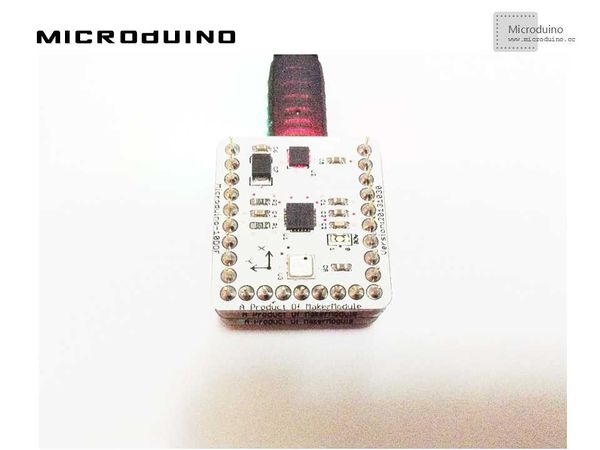“Compass”的版本间的差异
(Created page with "{| style="width: 800px;" |- | ==Objective== The course will show you how to simulate a compass in Processing by presenting the data of magnetic field strength detected by Mic...") |
(→Debugging) |
||
| (未显示同一用户的6个中间版本) | |||
| 第4行: | 第4行: | ||
==Objective== | ==Objective== | ||
| − | The course will show you how to simulate a compass | + | The course will show you how to simulate a compass on Processing by presenting the data of magnetic field strength detected by Microduino-10DOF module. |
| − | == | + | ==Equipment== |
*'''[[Microduino-Core]]''' | *'''[[Microduino-Core]]''' | ||
*'''[[Microduino-FT232R]]''' | *'''[[Microduino-FT232R]]''' | ||
*'''[[Microduino-10DOF]]''' | *'''[[Microduino-10DOF]]''' | ||
| − | *Other Hardware | + | *Other Hardware Equipment |
| − | **A USB cable | + | **A USB cable |
==Schematic Diagram== | ==Schematic Diagram== | ||
| 第36行: | 第36行: | ||
Microduino: | Microduino: | ||
| − | //The data of the magnetic field strength will | + | //The data of the magnetic field strength will be displayed on Processing via serial output |
void loop() | void loop() | ||
| 第58行: | 第58行: | ||
//Drawing a magnetic field pointer | //Drawing a magnetic field pointer | ||
| + | |||
arrow(int x1, int y1, int x2, int y2, color c) | arrow(int x1, int y1, int x2, int y2, color c) | ||
| − | //Judging whether can convert them into numbers | + | //Judging whether can convert them into numbers or not |
| + | |||
isNumeric(String str) | isNumeric(String str) | ||
| − | Step 3:Uploading the code and | + | Step 3:Uploading the code and get it compiled successfully. |
| − | Step 4:After the system goes smoothly, you can use a magnet to change the magnetic field and see if there is any change. | + | Step 4:After the system goes smoothly, you can use a magnet to change the magnetic field and see if there is any change. |
==Result== | ==Result== | ||
| − | There will be a simple compass displayed on the screen and the pointer will | + | There will be a simple compass displayed on the screen and the pointer will be changed along with the change of the magnetic field. As follows: |
[[File:compass_simulatorResult.jpg|600px|center|thumb]] | [[File:compass_simulatorResult.jpg|600px|center|thumb]] | ||
| − | |||
==Video== | ==Video== | ||
2014年6月6日 (五) 08:51的最新版本
ObjectiveThe course will show you how to simulate a compass on Processing by presenting the data of magnetic field strength detected by Microduino-10DOF module. Equipment
Schematic DiagramThe HMC5883L magnetic field strength sensor of Microduino-10DOF will be available. ProgramReferring to compassMicroduino compass_simulator DebuggingStep 1:Building the hardware environment according to the schematic diagram, just like this:
The code of the two ends (Processing and Microduino) Microduino: //The data of the magnetic field strength will be displayed on Processing via serial output void loop()
{
mag.getHeading(&mx, &my, &mz);
Serial.print(mx);
Serial.print(",");
Serial.println(my);
}
Processing: //After getting the data of the first serial port, defining them or caching them if there is a new line // is always my Arduino, so I open Serial.list()[0]. // Open whatever port is the one you're using.
myPort = new Serial(this, Serial.list()[0], 9600);
myPort.bufferUntil('\n'); // Trigger a SerialEvent on new line
//Presenting the data obtained from Microduino on the screen in the form of curves with different color and then marking them Function Description: //Drawing a magnetic field pointer arrow(int x1, int y1, int x2, int y2, color c) //Judging whether can convert them into numbers or not isNumeric(String str) Step 3:Uploading the code and get it compiled successfully. Step 4:After the system goes smoothly, you can use a magnet to change the magnetic field and see if there is any change. ResultThere will be a simple compass displayed on the screen and the pointer will be changed along with the change of the magnetic field. As follows: Video |
